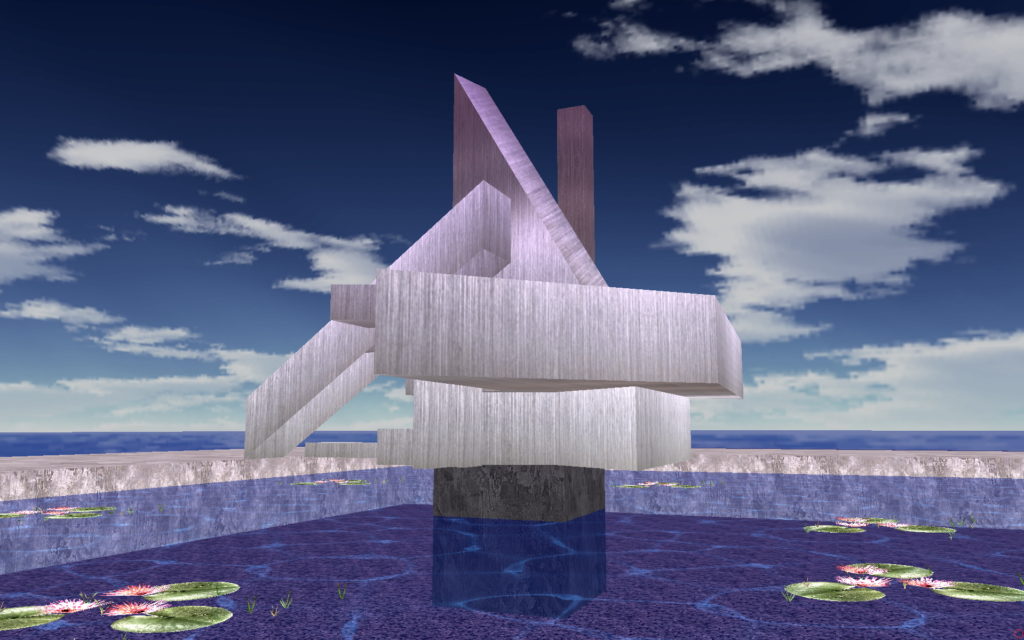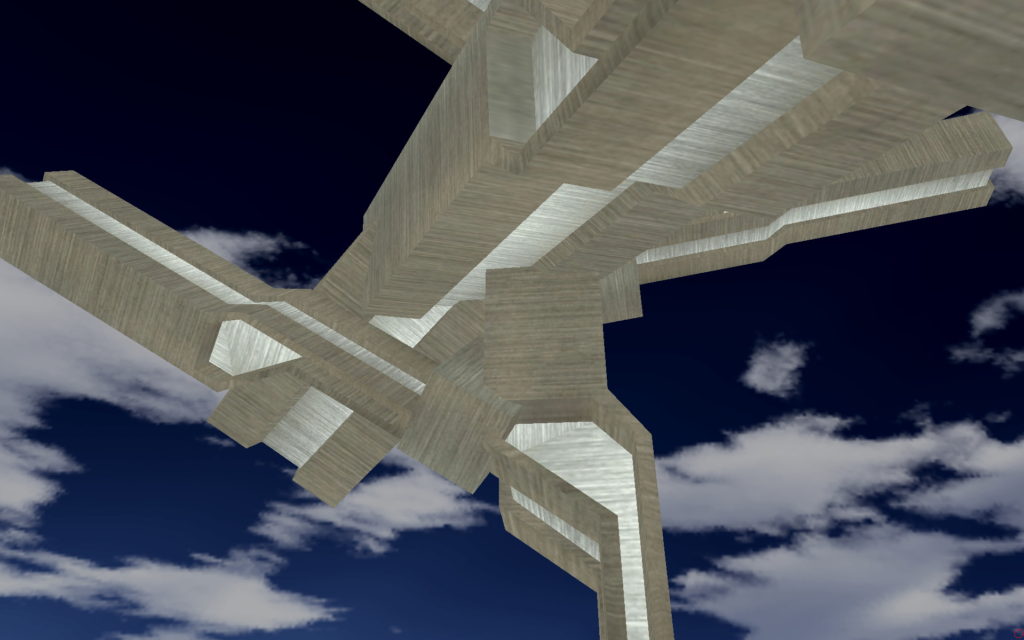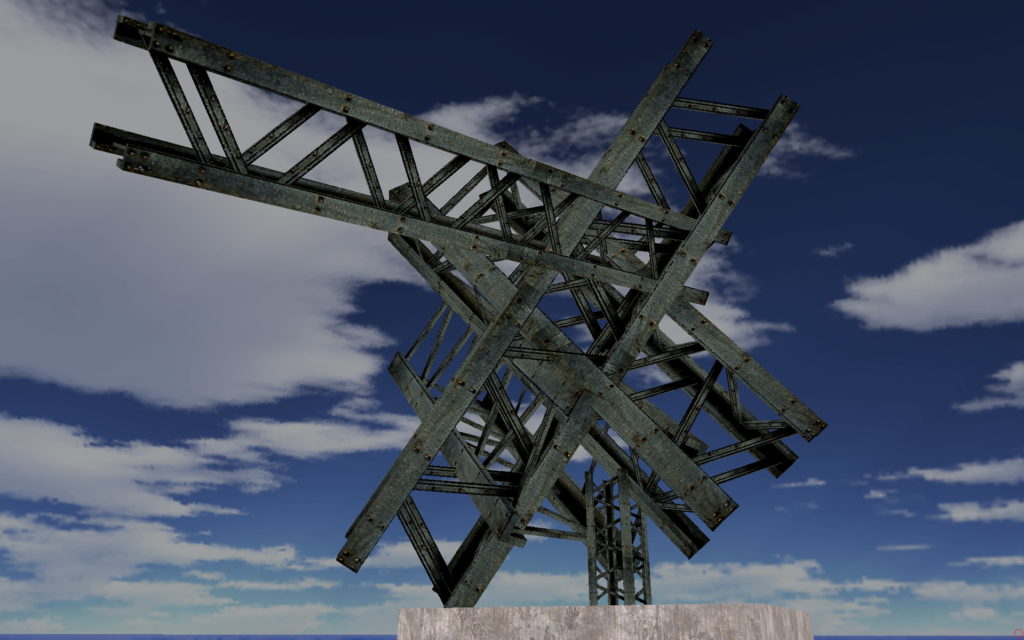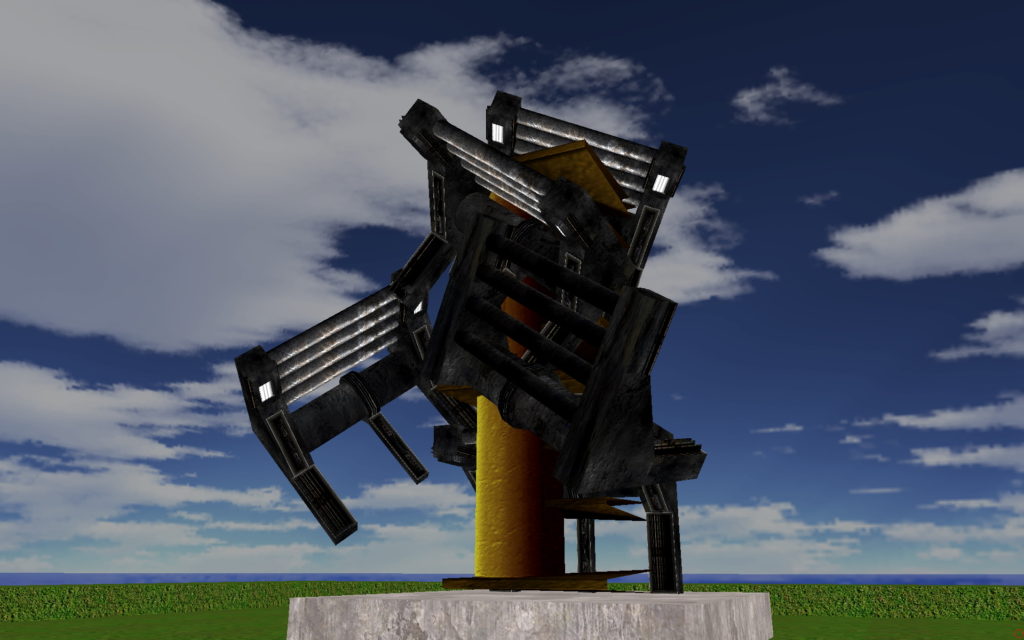Many years ago, when I was about 19 years old, I decided on art as a professional career, and with the help of Lee Krasner, Elaine deKooning and others, I did rather well, with a few sales in the six-figure numbers, although just barely squeaking by on that measure.
My average softball-sized bronze sculpture went for about $350 at first, in the sixties, then gradually topping off in the $22,000.00 range in the 1980s for my larger and more complex — and therefore more expensive at the foundry — bronze sculptures, usually with onyx bases.
I no longer go to the foundry, nor could I if I wanted to, which I really don’t. I’ve BEEN to the foundry lots of times, to my total satisfaction.
I now have a way of sculpting inside the virtual world of our very own Godd™ Engine.
I learned wax work and slipcasting and all manner of sculptural technology when I went to Otis Art Institute and when I opened my own studio in Glendale, but in the end, my work in the virtual world of our very own Godd™ Engine, won out, and I no longer sculpt in bronze.
Again, many years ago, Renzo (that’s short for “Lorenzo”, I figured out) Fenci made damn sure everyone in his sculpture studio knew exactly what the score was, and he lost no time in telling us.
You get your money from rich patrons who want personal portraits or portraits of their pets, and if you can’t produce a flattering piece, you won’t last long.
You need a public and you need a following, and without those, you’ll sell nothing, no matter how grand and incredible your production may be over your lifetime.
I soon learned that to earn the bread-and-butter, you PAINT, and to spend your well-earned small fortune, you SCULPT.
In the financial sense, sculpture is not profitable and it’s not a good business to be in unless that’s all you can do.
In my case, I also make videogames and we have our own 3D environment and resources in which I discovered, to my delight, that I could construct 3D virtual sculptures, the likes of which have never before been seen.
I am presently going where no sculptor has gone before.
In every other sculptural medium — wood, bronze, glass, steel, concrete, plastic — just about everything has been done at least once.
In virtual sculpture, you can be sure the number of pieces similar to yours is zero.
Please note, I am not talking about digital sculptures or digital art. It’s true that the Godd™ Engine is a digital device, but digital sculpture is different.
I go into the environment and actually BUILD the sculpture right then and there, just as if I were inside the space that is my virtual studio.
I can control the result quite easily from the keyboard and mouse side of the equation. In short, I am if not the first, certainly ONE of the first, virtual sculptors in the world.
Now, if only I can SELL my virtual sculptures, I will have proven my thesis, that virtual art is on the way to the mainstream, and faster than you would believe, powered by the NFT and other such attractive investments.
Yes, that’s right. At the root of all this is money. You need to get paid for whatever it is you do, and if you can’t or don’t get paid for what you do do, you have to get paid for what you don’t do, if you get my drift.
The thing about any sculpture, virtual or not, is that it can be viewed from many different angles. This is important.
When you’re working on a piece of sculpture, you want to work your way around it, keep moving around it, so you see from every angle what’s happening and what the exact effect is.
There is always a tendency to favor the “front” of the thing, but you need to fight against that tendency in yourself.
When designing a virtual sculpture, you want to avoid making the viewer look up, although they will, and they’re expected to, but not by making the damn thing ten stories high.
This impresses only at a distance, and nothing impresses at a distance.
Limit the height, limit the complexity and limit the environment — keep it simple. I use a lily pond or a green grass lawn and a modest concrete base.
The TEXTURE of the sculpture is very critical to its unique qualities and to its viewing. Some textures are just a lot harder to see in virtual space, so you have to test each one to see what the actual effect is, inside the virtual world.
You have several building options, one of which is the box, and another of which is the model.
I’ve used both at once and one at a time, and it all works, depending on your skill and vision as an artist.
If you want to be in on the ground floor of the biggest art revolution in art history, join us for our Godd™ Games workshops, clinics and weekly ZOOM meetings.
So the end result is that I finally have a medium that belongs in the 21st century, the Age of Digital Art, and I’m quite content to produce in the virtual world, more so than in the brick-and-mortar world.
I grew quite tired of the limited potential of the street gallery, and am glad to see them retired mostly, with virtual galleries flourishing all over the world.
Well, I’m going to have a midnight snack, then return to my virtual sculpture, which I’m posting for your benefit on eBay.
Did you visit my ebay art gallery? I’m just wondering how many out of all the folks who read this blog will actually click on the link and go there to see what I’m talking about.
The experience of building a piece of virtual sculpture is unmatched by any other experience, and this is the only way it is available to you in this world.
You can get plenty of help in making virtual sculptures, and you can set about to collect them — they will soon be rare and unobtainable.
The sculptures are shipped on USB flash drive wallet cards, of course, so they can be flat-signed and numbered.
You merely open the game and walk around the sculpture, observing it from every angle, including up — just a hint.
Okay, time to get back to sculpting …
(SOUND: “Bink, Bink”)
See You At The Top!
gorby





